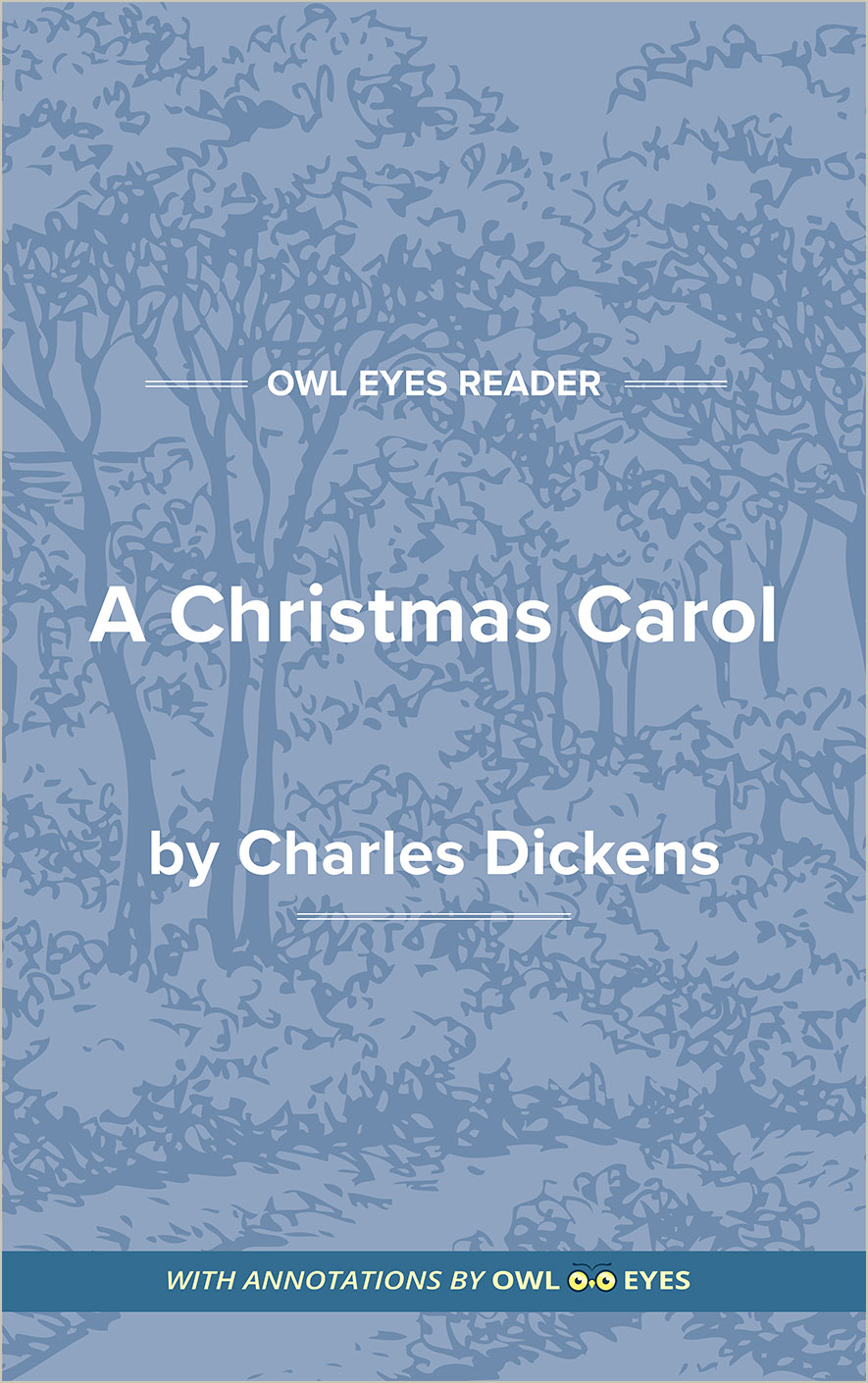Analysis Pages
Literary Devices in A Christmas Carol
Allegory: An allegorical story is one that teaches a moral lesson, often using characters as symbols. Typically the meanings of such stories are straightforward and fixed in order to make their lessons as clear as possible. In A Christmas Carol, main character Scrooge is representative of the selfish, uncaring aristocratic upper class, who have no idea what the average experience of the English poor is like. Dickens employs Scrooge’s character change to elicit similar transformation in the wealthy, attempting to spur them into becoming kinder, more generous citizens.
Furthermore, Fred represents an ideal member of the middle class, who takes notice of his employees’ plights and treats them warmly in accordance to the spirit of Christmas; he is a model employer. Tiny Tim and Bob Cratchit, as representatives of the lower-class poor, are hardworking, optimistic, and worthy of readers’ pity. Their sympathetic portrayal is important because they are the people Dickens wishes to help most with his story by showing that they are necessarily worthy of assistance.
Frame Story: A frame story is a literary technique in which a part of a narrative is introduced at the beginning of a text and then finished at its end, with at least one other narrative occurring in between the story’s two halves. A Christmas Carol establishes Scrooge’s character in its first stave and shows his dramatic personality shift in the final stave. For Scrooge’s transformation to occur and have meaning, it is necessary to explore several brief stories of his past, present, and future lives in order to set up this change.
Literary Devices Examples in A Christmas Carol:
Stave One
🔒" bones are gnawed by dogs..." See in text (Stave One)
"whole length of the expression, and said that he would see him in that extremity first...." See in text (Stave One)
"Marley's Ghost..." See in text (Stave One)
"You will therefore permit me to repeat, emphatically, that Marley was as dead as a door-nail..." See in text (Stave One)
Stave Two
🔒"No more work to-night. Christmas Eve, Dick. Christmas, Ebenezer!..." See in text (Stave Two)
"and called out in a comfortable, oily, rich, fat, jovial voice..." See in text (Stave Two)
"as close to it as I am now to you, and I am standing in the spirit at your elbow..." See in text (Stave Two)
"The quarter was so long..." See in text (Stave Two)
Stave Three
🔒"Scrooge hung his head to hear his own words quoted by the Spirit,..." See in text (Stave Three)
"“There are some upon this earth of ours,” returned the Spirit, “who lay claim to know us, and who do their deeds of passion, pride, ill-will, hatred, envy, bigotry, and selfishness in our name,..." See in text (Stave Three)
"I don't mind calling on you to believe that he was ready for a good broad field of strange appearances, and that nothing between a baby and a rhinoceros would have astonished him very much..." See in text (Stave Three)
Stave Four
🔒"skrieks..." See in text (Stave Four)
"the city rather seemed to spring up about them, and encompass them of its own act...." See in text (Stave Four)
"Oh cold, cold, rigid, dreadful Death..." See in text (Stave Four)
"Spirit of Tiny Tim, thy childish essence was from God..." See in text (Stave Four)
Stave Five
🔒"He was at home in five minutes...." See in text (Stave Five)

